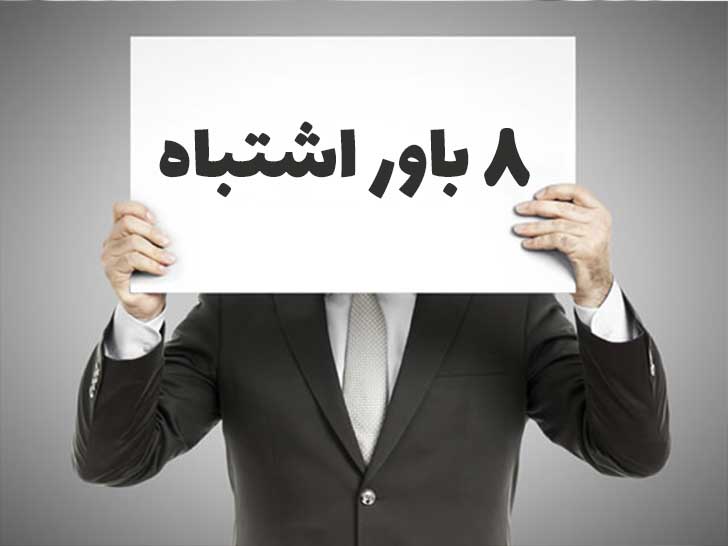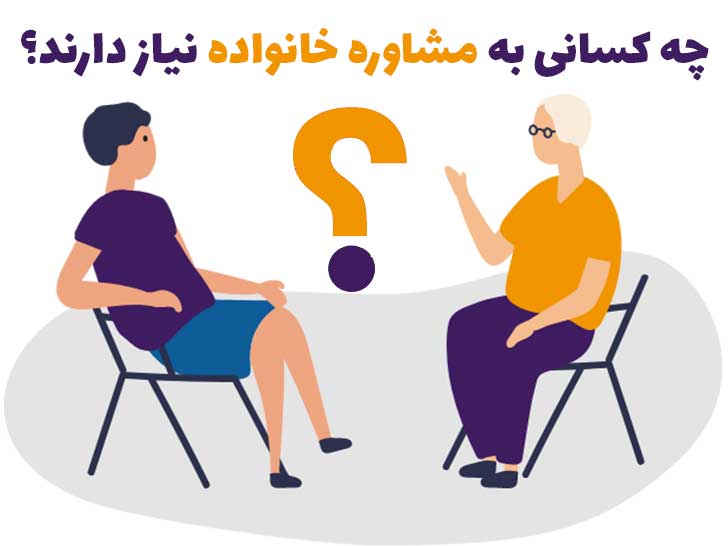اخبار روانشناسی ندای مهر
The Multidimensional Inventory of Black Identity-teen (MIBI-t) The Multidimensional Model of Racial Identity (MMRI) The Multidimensional Inventory of Black Identity-teen The Multidimensional Inventory of Black Identity –teen (MIBI-t) assess the three stable dimensions of racial identity identified by the Multidimensional Model of Racial Identity (Centrality‚ Regard‚ Ideology) in African American early and middle adolescents. The MIBI-t has demonstrated evidence of both construct validity and external validity in a sample of African American middle school and high school students (Scottham‚ Sellers‚ & Nguyen‚ under review). The MIBI-t consists of seven subscales comprised of three items each. Participants respond regarding the extent to which they agree or disagree with items using a 5-point Likert scale ranging from strongly disagree to strongly agree. Centrality Scale 1. I feel close to other Black people. 2. I have a strong sense of belonging to other Black people. 3. If I were to describe myself to someone‚ one of the first things that I would say is that I’m Black. Regard Scale Private Regard Subscale 1. I am happy that I am Black. 2. I am proud to be Black. 3. I feel good about Black people. Public Regard Subscale 1. Most people think that Blacks are as smart as people of other races. 2. People think that Blacks are as good as people from other races. 3. People from other races think that Blacks have made important contributions. Ideology Scale Assimilation Subscale 1. It is important that Blacks go to White Schools so that they can learn how to act around Whites. 2. I think it is important for Blacks not to act Black around White people. 3. Blacks should act more like Whites to be successful in this society. Humanist Subscale 1. Being an individual is more important than identifying yourself as Black. 2. Blacks should think of themselves as individuals‚ not as Blacks. 3. Black people should not consider race when deciding what movies to go see. Minority Subscale 1. People of all minority groups should stick together and fight discrimination. 2. There are other people who experience discrimination similar to Blacks. 3. Blacks should spend less time focusing on how we differ from other minority groups and more time focusing on how we are similar to people from other minority groups. Nationalist Subscale 1. Black parents should surround their children with Black art and Black books. 2. Whenever possible‚ Blacks should buy from Black businesses. 3. Blacks should support Black entertainment by going to Black movies and watching Black TV shows. Likert Response Scale: (1) Really Disagree; (2) Kind of Disagree; (3) Neutral; (4) Kind of Agree; (5) Really Agree
The Multidimensional Model of Racial Identity (MMRI) represents a synthesis of ideas from many existing models of African American racial identity (Sellers et al.‚ 1998). The MMRI defines racial identity as that part of the person's self-concept that is related to her/his membership within a race. It is concerned with both the significance the individual places on race in defining him/herself and the individual's interpretations of what it means to be Black. The MMRI proposes four dimensions of racial identity in African Americans: the salience of identity; the centrality of the identity; the ideology associated with the identity; and the regard in which the person holds African Americans. The first two dimensions address the significance of race in the individual's self-definition; the second two dimensions address the qualitative meaning that the individual ascribes to being Black.
Racial identity salience refers to the extent to which a person's race is a relevant part of her/his self-concept at a particular moment in time. Salience is concerned with the specific event as the level of analysis. It is highly sensitive to both the context of a situation as well as the person's proclivity to define her/himself in terms of race (i.e.‚ centrality). Salience is the dynamic aspect of racial identity. Salience is the mechanism by which the other three stable dimensions (centrality‚ ideology‚ and regard) influence the way a person experiences a particular event. When racial identity is made salient‚ individuals' ideology and regard influences their construal and behavioral response.
The centrality dimension of racial identity refers to the extent to which a person normatively defines her/himself with regard to race. It is an indicator of whether race is a core part of an individual's self-concept. Implicit in the conceptualization of centrality is a hierarchical ranking of different identities with regard to their proximity to the individual's core definition of self.
The third dimension of racial identity‚ ideology‚ is the individual's beliefs‚ opinions‚ and attitudes with respect to the way s/he feels Blacks should act. This dimension represents the person's philosophy about the ways in which African Americans should live and interact with society. Four ideologies are proposed: 1) a nationalist philosophy‚ characterized by a viewpoint that emphasizes the uniqueness of being of African descent; 2) an oppressed minority philosophy‚ characterized by a viewpoint that emphasizes the similarities between African Americans and other oppressed groups; 3) an assimilation philosophy‚ characterized by a viewpoint that emphasizes the similarities between African Americans and the rest of American society; and 4) a humanist philosophy‚ characterized by a viewpoint that emphasizes the commonalties amongst all humans. Although some individuals can be categorized as possessing one ideology predominantly‚ but it is likely that most people hold a variety of ideological philosophies that vary across areas of functioning.
The fourth dimension‚ regard‚ refers to a person's affective and evaluative judgment of his/her race. The regard dimension consists of a private and a public component. Private regard refers to the extent to which individuals feel positively or negatively towards African Americans and their membership in that group. On the other hand‚ public regard refers to the extent to which individuals feel that others view African Americans positively or negatively.
The Multidimensional Inventory of Black Identity (MIBI)
The Multidimensional Inventory of Black Identity (MIBI) was developed to measure the three stable dimensions of the MMRI (centrality‚ ideology‚ and regard) in African Americans college students and adults (Sellers‚ Rowley‚ Chavous‚ Shelton‚ & Smith‚ 1997). (Because of the situationally-dynamic nature of racial identity salience‚ attempting to measure it with a paper and pencil attitudes measure is in appropriate.)As such‚ the 56-item inventory is comprised of three scales that measure the centrality‚ ideology‚ and regard dimensions. The ideology scale consists of four subscales (Nationalist‚ Assimilation‚ Minority‚ and Humanist)‚ and the regard scale consists of two subscales (Private Regard and Public Regard). A 7-point Likert type response scale is used with 1=strongly disagree and 7=strongly agree.
Centrality Scale
1. Overall‚ being Black has very little to do with how I feel about myself. (R)2. In general‚ being Black is an important part of my self-image.
3. My destiny is tied to the destiny of other Black people.
4. Being Black is unimportant to my sense of what kind of person I am. (R)5. I have a strong sense of belonging to Black people.
6. I have a strong attachment to other Black people.
7. Being Black is an important reflection of who I am.
8. Being Black is not a major factor in my social relationships. (R)
Regard ScalePrivate Regard Subscale
1. I feel good about Black people.
2. I am happy that I am Black.
3. I feel that Blacks have made major accomplishments and advancements.
4. I often regret that I am Black. (R)5. I am proud to be Black.
6. I feel that the Black community has made valuable contributions to this society
Public Regard Subscale
1. Overall‚ Blacks are considered good by others.
2. In general‚ others respect Black people.
3. Most people consider Blacks‚ on the average‚ to be more ineffective than other racial groups. (R)4. Blacks are not respected by the broader society. (R)5. In general‚ other groups view Blacks in a positive manner.
6. Society views Black people as an asset.
Ideology ScaleAssimilation Subscale
1. Blacks who espouse separatism are as racist as White people who also espouse separatism.
2. A sign of progress is that Blacks are in the mainstream of America more than ever before.
3. Because America is predominantly white‚ it is important that Blacks go to White schools so that they can gain experience interacting with Whites.
4. Blacks should strive to be full members of the American political system.
5. Blacks should try to work within the system to achieve their political and economic goals.
6. Blacks should strive to integrate all institutions which are segregated.
7. Blacks should feel free to interact socially with White people.
8. Blacks should view themselves as being Americans first and foremost.
9. The plight of Blacks in America will improve only when Blacks are in important positions within the system.
Humanist Subscale
1. Black values should not be inconsistent with human values.
2. Blacks should have the choice to marry interracially.
3. Blacks and Whites have more commonalties than differences.
4. Black people should not consider race when buying art or selecting a book to read.
5. Blacks would be better off if they were more concerned with the problems facing all people than just focusing on Black issues.
6. Being an individual is more important than identifying oneself as Black.
7. We are all children of a higher being‚ therefore‚ we should love people of all races.
8. Blacks should judge Whites as individuals and not as members of the White race
9. People regardless of their race have strengths and limitations.
Oppressed Minority Subscale
1. The same forces which have led to the oppression of Blacks have also led to the oppression of other groups.
2. The struggle for Black liberation in America should be closely related to the struggle of other oppressed groups.
3. Blacks should learn about the oppression of other groups.
4. Black people should treat other oppressed people as allies.
5. The racism Blacks have experienced is similar to that of other minority groups.
6. There are other people who experience racial injustice and indignities similar to Black Americans.
7. Blacks will be more successful in achieving their goals if they form coalitions with other oppressed groups.
8. Blacks should try to become friends with people from other oppressed groups.
9. The dominant society devalues anything not White male oriented.
Nationalist Subscale
1. It is important for Black people to surround their children with Black art‚ music and literature.
2. Black people should not marry interracially.
3. Blacks would be better off if they adopted Afrocentric values.
4. Black students are better off going to schools that are controlled and organized by Blacks.
5. Black people must organize themselves into a separate Black political force.
6. Whenever possible‚ Blacks should buy from other Black businesses.
7. A thorough knowledge of Black history is very important for Blacks today.
8. Blacks and Whites can never live in true harmony because of racial differences.
9. White people can never be trusted where Blacks are concerned.
To download a copy of the MIBI including scoring instructions please press here.
|
1
|
2
|
3
|
4
|
5
|
|
do not believe
|
strongly believe in Asian values
|
|
1
|
2
|
3
|
4
|
5
|
|
do not believe
|
strongly believe in Asian values
|
|
1
|
2
|
3
|
4
|
5
|
|
do not fit
|
fit very well
|
|
1
|
2
|
3
|
4
|
5
|
|
do not fit
|
fit very well
|
|
1. I am most comfortable being with people from
|
The United
States
|
The country my
family is from
|
Both
|
Other/Neither
|
|
2. My best friends are from
|
The United
States
|
The country my
family is from
|
Both
|
Other/Neither
|
|
3. The people I fit in with best are from
|
The United
States
|
The country my
family is from
|
Both
|
Other/Neither
|
|
4. My favorite music is from
|
The United
States
|
The country my
family is from
|
Both
|
Other/Neither
|
|
5. My favorite TV shows are from
|
The United
States
|
The country my
family is from
|
Both
|
Other/Neither
|
|
6. The holidays I celebrate are from
|
The United
States
|
The country my
family is from
|
Both
|
Other/Neither
|
|
7. The food I eat at home is from
|
The United
States
|
The country my
family is from
|
Both
|
Other/Neither
|
|
8. The way I do things and the way I think about things are from
|
The United
States
|
The country my
family is from
|
Both
|
Other/Neither
|
|
|
||
|
Marin Acculturation Scale – Revised
Please respond as you find best that describes your preferences. There is no right or wrong answers.
1=Only Chinese
2=More Chinese than English
3=Both Equally
4=More English than Chinese
5=Only English.
Language preference
1. In what language do you think?
2. In general‚ what language(s) do you read and speak?
3. What was the language(s) you used as a child?
4. If you could choose your children’s friends‚ you want them to be – Chinese or American
5. What language(s) do you usually speak at home?
6. What language(s) do you usually speak with your friends?
Language preferred for media
7. In what language(s) are the TV programs you usually watch?
8. In what language(s) are the radio programs you usually listen to?
9. In general‚ in what languages are the movies you prefer to watch and listen to?
Ethnic social relations
10. Your close friends are – Chinese or American
11. Your prefer going to social gatherings/parties at which people are – Chinese or American
12. The persons you visit or who visit you are – Chinese or American
Source: Gupta‚ R. & Yick‚ A. (2001). Preliminary validation of the acculturation scale on Chinese Americans. J Soc Work Res Eval. 1 (2)‚ Table 3‚ p. 51. Reproduced with the permission of Springer Publishing Company‚ LLC‚ New York‚ NY.
|
|
A lot
|
Some
|
A few
|
None at all
|
|
|
White American or Anglo culture
|
||||
|
Asian or Asian American culture
|
||||
|
Mexican American or Spanish culture
|
||||
|
Black or African American culture
|
||||
|
American Indian culture
|
||||
|
Other culture
|
|
A lot
|
Some
|
A few
|
None at all
|
|
|
Mexican American or Spanish culture
|
||||
|
Asian or Asian American culture
|
||||
|
White American or Anglo culture
|
||||
|
Black or African American culture
|
||||
|
American Indian culture
|
||||
|
Other culture
|
|
A lot
|
Some
|
A few
|
None at all
|
|
|
American Indian culture
|
||||
|
White American or Anglo culture
|
||||
|
Mexican American or Spanish culture
|
||||
|
Black or African American culture
|
||||
|
Asian or Asian American culture
|
||||
|
Other culture
|
|
A lot
|
Some
|
A few
|
None at all
|
|
|
An Asian or Asian American culture
|
||||
|
White American or Anglo culture
|
||||
|
Mexican American or Spanish culture
|
||||
|
Black or African American culture
|
||||
|
American Indian culture
|
||||
|
Other culture
|
|
A lot
|
Some
|
A few
|
None at all
|
|
|
Black or African American culture
|
||||
|
Mexican American or Spanish culture
|
||||
|
American Indian culture
|
||||
|
White American or Anglo culture
|
||||
|
Asian or Asian American culture
|
||||
|
Other culture
|
|
A lot
|
Some
|
A few
|
None at all
|
|
|
American Indian culture
|
||||
|
Asian or Asian American culture
|
||||
|
Mexican American or Spanish culture
|
||||
|
Black or African American culture
|
||||
|
White American or Anglo culture
|
||||
|
Other culture
|
Adapted from Oetting‚ E.R. & Beauvais‚ F. (1990–1991). Orthogonal cultural identification theory: The cultural identification of minority adolescents. Int J Addict‚ 25‚ (5A and 6A)‚ 655–685. This scale may be used‚ for research purpose only‚ without further permission from the authors.
|
Strongly disagree
|
Mildly disagree
|
Mildly
agree
|
Strongly
agree
|
|||
|
1
|
2
|
3
|
4
|
5
|
6
|
7
|
|
Moderately
disagree
|
Neither agree
nor disagree
|
Moderately
disagree
|
Asian American Multidimensional Acculturation Scale (AAMAS) Instructions: Use the scale below to answer the following questions. Please circle the number that best represents your view on each item.
|
Not very well
|
Somewhat
|
Very well
|
|||||
|
1. How well do speak the language of –
|
|||||||
|
a. your own Asian culture of origin?
|
1
|
2
|
3
|
4
|
5
|
6
|
|
|
b. other Asian groups in America?
|
1
|
2
|
3
|
4
|
5
|
6
|
|
|
c. English?
|
1
|
2
|
3
|
4
|
5
|
6
|
|
|
2. How well do you understand the language
of –
|
|||||||
|
a. your own Asian culture of origin?
|
1
|
2
|
3
|
4
|
5
|
6
|
|
|
b. other Asian groups in America?
|
1
|
2
|
3
|
4
|
5
|
6
|
|
|
c. English?
|
1
|
2
|
3
|
4
|
5
|
6
|
|
|
3. How well do you read and write in the
language of –
|
|||||||
|
a. your own Asian culture of origin?
|
1
|
2
|
3
|
4
|
5
|
6
|
|
|
b. other Asian groups in America?
|
1
|
2
|
3
|
4
|
5
|
6
|
|
|
c. English?
|
1
|
2
|
3
|
4
|
5
|
6
|
|
|
4. How often do you listen to music or look at
movies and magazines from
|
|||||||
|
a. your own Asian culture of origin?
|
1
|
2
|
3
|
4
|
5
|
6
|
|
|
b. other Asian groups in America?
|
1
|
2
|
3
|
4
|
5
|
6
|
|
|
c. the White mainstream groups?
|
1
|
2
|
3
|
4
|
5
|
6
|
|
|
5. How much do you like the food of –
|
|||||||
|
a. your own Asian culture of origin?
|
1
|
2
|
3
|
4
|
5
|
6
|
|
|
b. other Asian groups in America?
|
1
|
2
|
3
|
4
|
5
|
6
|
|
|
c. the White mainstream groups?
|
1
|
2
|
3
|
4
|
5
|
6
|
|
|
6. How often do you eat the food of –
|
|||||||
|
a. your own Asian culture of origin?
|
1
|
2
|
3
|
4
|
5
|
6
|
|
|
b. other Asian groups in America?
|
1
|
2
|
3
|
4
|
5
|
6
|
|
|
c. the White mainstream groups?
|
1
|
2
|
3
|
4
|
5
|
6
|
|
|
7. How knowledgeable are you about the
history of –
|
|||||||
|
a. your own Asian culture of origin?
|
1
|
2
|
3
|
4
|
5
|
6
|
|
|
b. other Asian groups in America?
|
1
|
2
|
3
|
4
|
5
|
6
|
|
|
c. the White mainstream groups?
|
1
|
2
|
3
|
4
|
5
|
6
|
|
|
8. How knowledgeable are you about the
culture and traditions of –
|
|||||||
|
a. your own Asian culture of origin?
|
1
|
2
|
3
|
4
|
5
|
6
|
|
|
b. other Asian groups in America?
|
1
|
2
|
3
|
4
|
5
|
6
|
|
|
c. the White mainstream groups?
|
1
|
2
|
3
|
4
|
5
|
6
|
|
|
9. How much do you practice the traditions
and keep the holidays of –
|
|||||||
|
a. your own Asian culture of origin?
|
1
|
2
|
3
|
4
|
5
|
6
|
|
|
b. other Asian American cultures?
|
1
|
2
|
3
|
4
|
5
|
6
|
|
|
c. the White mainstream culture?
|
1
|
2
|
3
|
4
|
5
|
6
|
|
|
10. How much do you identify with –
|
|||||||
|
a. your own Asian culture of origin?
|
1
|
2
|
3
|
4
|
5
|
6
|
|
|
b. other Asian groups in America?
|
1
|
2
|
3
|
4
|
5
|
6
|
|
|
c. the White mainstream groups?
|
1
|
2
|
3
|
4
|
5
|
6
|
|
|
11. How much do you feel you have in common
with people from –
|
|||||||
|
a. your own Asian culture of origin?
|
1
|
2
|
3
|
4
|
5
|
6
|
|
|
b. other Asian groups in America?
|
1
|
2
|
3
|
4
|
5
|
6
|
|
|
c. the White mainstream groups?
|
1
|
2
|
3
|
4
|
5
|
6
|
|
|
12. How much do you interact and associate with
people from –
|
|||||||
|
a. your own Asian culture of origin?
|
1
|
2
|
3
|
4
|
5
|
6
|
|
|
b. other Asian groups in America?
|
1
|
2
|
3
|
4
|
5
|
6
|
|
|
c. the White mainstream groups?
|
1
|
2
|
3
|
4
|
5
|
6
|
|
|
13. How much would you like to interact and
associate with people from –
|
1
|
2
|
3
|
4
|
5
|
6
|
|
|
a. your own Asian culture of origin?
|
1
|
2
|
3
|
4
|
5
|
6
|
|
|
b. other Asian groups in America?
|
1
|
2
|
3
|
4
|
5
|
6
|
|
|
c. the White mainstream groups?
|
1
|
2
|
3
|
4
|
5
|
6
|
|
|
14. How proud are you to be part of –
|
1
|
2
|
3
|
4
|
5
|
6
|
|
|
a. your own Asian culture of origin?
|
1
|
2
|
3
|
4
|
5
|
6
|
|
|
b. other Asian groups in America?
|
1
|
2
|
3
|
4
|
5
|
6
|
|
|
c. the White mainstream groups?
|
1
|
2
|
3
|
4
|
5
|
6
|
|
|
15. How negative do you feel about people
from –
|
1
|
2
|
3
|
4
|
5
|
6
|
|
|
a. your own Asian culture of origin?
|
1
|
2
|
3
|
4
|
5
|
6
|
|
|
b. other Asian groups in America?
|
1
|
2
|
3
|
4
|
5
|
6
|
|
|
c. the White mainstream groups?
|
1
|
2
|
3
|
4
|
5
|
6
|
|

-

مشکل رابطه غیرصمیمی با همسرمان را چگونه حل کنیم؟
کارشناس ندای مهر (مشاوره خانواده) -

هدف مشاوره خانواده چیست؟
کارشناس ندای مهر (مشاوره خانواده) -

8 باور اشتباه که برای زندگی مشترک شما خطرناک است
کارشناس ندای مهر (مشاوره خانواده) -

چه کسانی به مشاوره خانواده نیاز دارند؟
کارشناس ندای مهر (مشاوره خانواده) -

چگونه در خانواده های همگی شاغل تقسیم وظایف کنیم؟
کارشناس ندای مهر (مشاوره خانواده)







